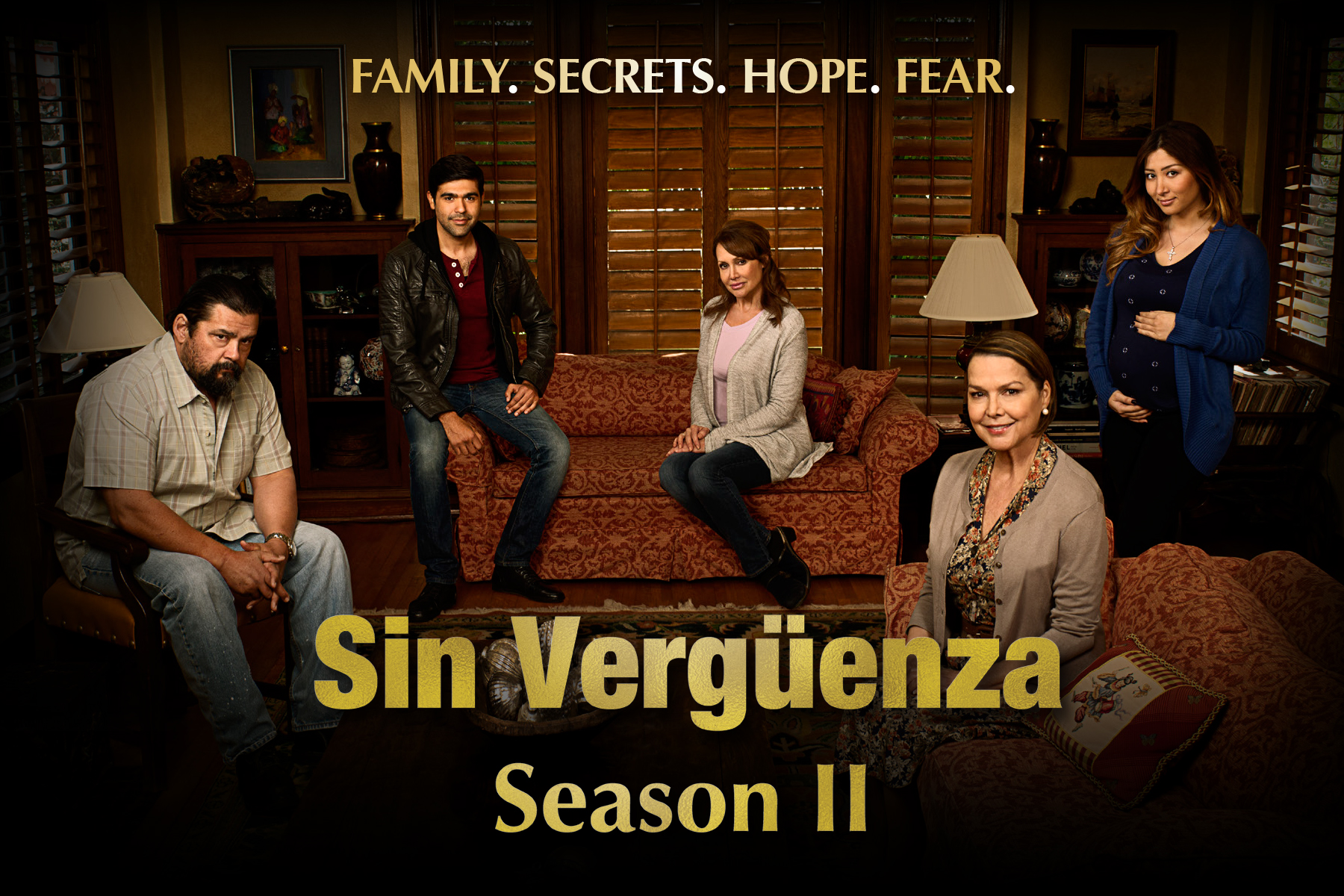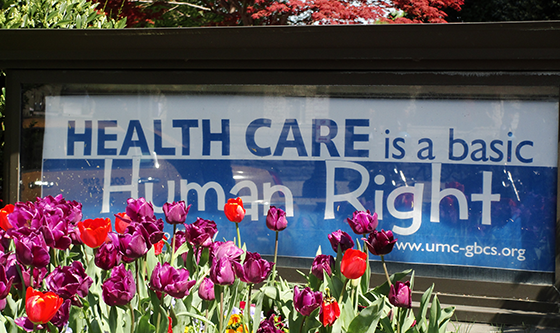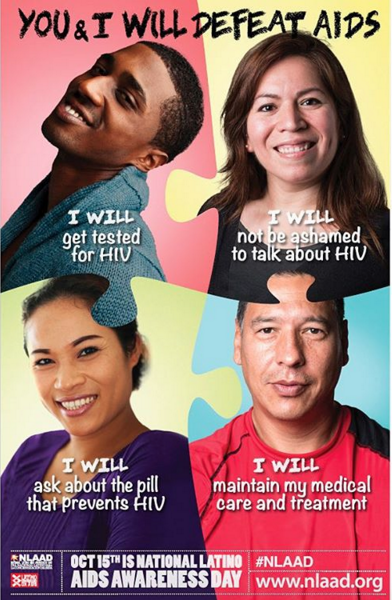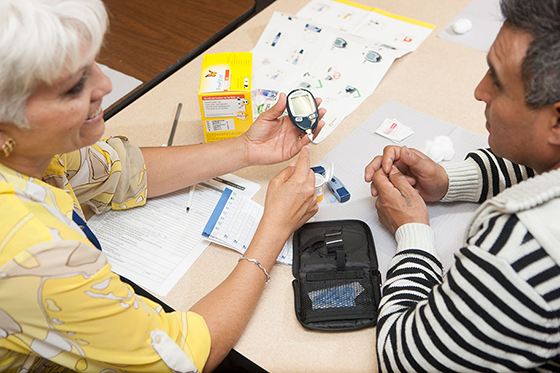How Is a Telenovela Getting Latinos to Talk Openly and Honestly About Sex?
Our Affiliate AltaMed Health Services talks about their innovative new public education web series
By David Castillo, Senior Digital Content Manager, NCLR
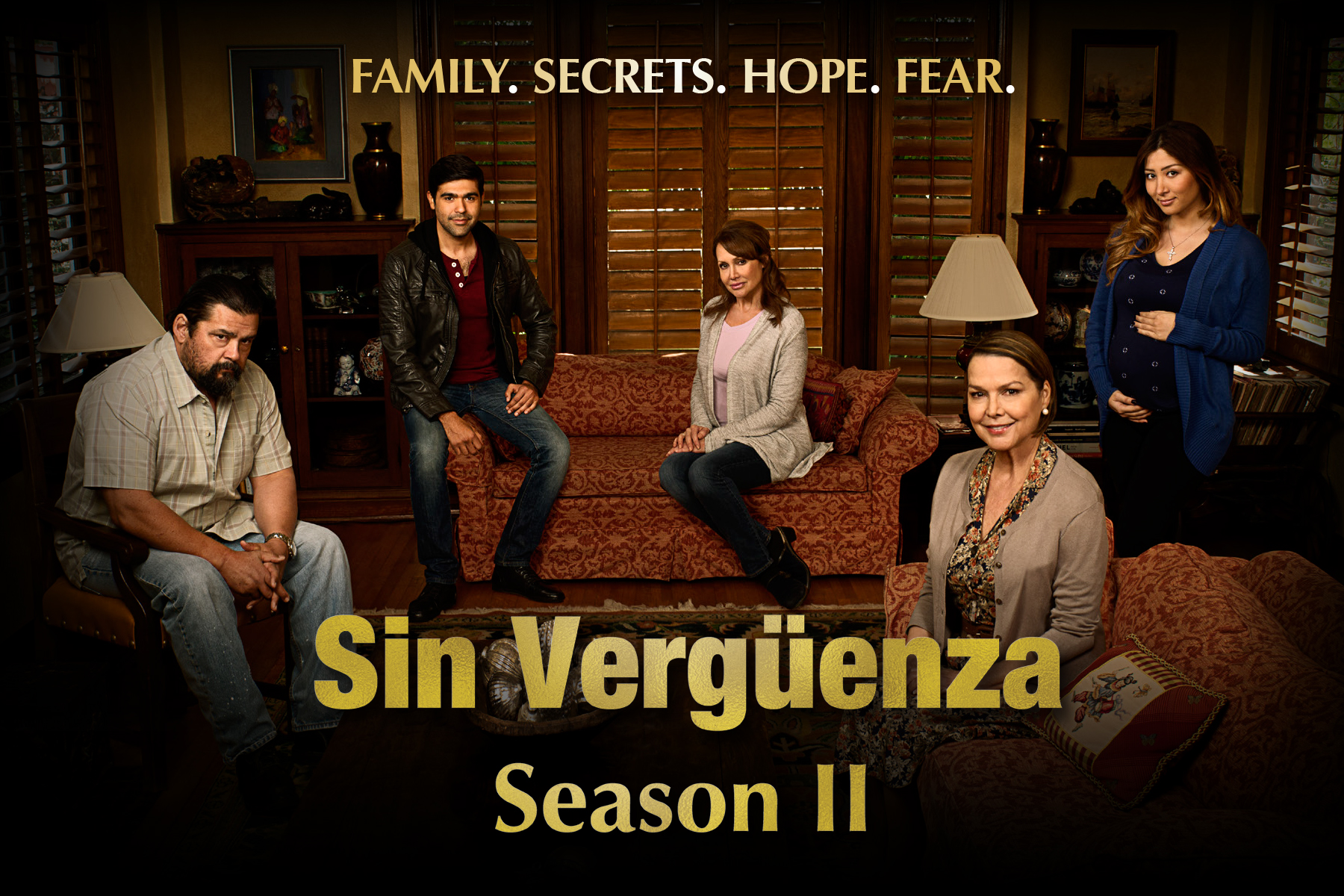
Talking about sex and sexuality is not always easy to do, especially if you belong to a community that too often avoids having such conversations at all. But we have to talk about it if we are going to tackle the health problems that can stem from unsafe sexual behavior and a general lack of information. That is exactly what the makers of the new web series Sin Vergüenza have attempted to do. Sin Vergüenza a telenovela centered on a family, comprising Adriana, the wife and mother, Cesar, the husband and father, Esther, the abuela, Enrique, the son, and Christina, the daughter. And they all happen to be dealing with the pitfalls of sex, relationships, and sexually transmitted diseases.
Not long ago, our California-based Affiliate, AltaMed Health Services, noticed an unsettling trend among their patients: a lack of information about sex and STDs, and a penchant for dodging conversations about them. With Sin Vergüenza, AltaMed set out to educate the Latino community about the role of HIV/AIDS and STDs in our community. But this would not be just any educational public service campaign. Those are plentiful, and indeed AltaMed has even created some of their own. No, the challenge for the AltaMed team was to create a series that would be educational and at the same time highly engaging and entertaining.

Their work has paid off. Under the leadership of creators Natalie Sanchez and Hilda Sandoval, AltaMed worked with a production company to write the script for season one, hire a fully bilingual cast and director, and to shoot and edit a four-episode web series over the course of six months in 2012. Together with their marketing manager Ramon Garcia, the AltaMed team has worked hard to get the show the exposure it deserves. The end product is easily one of the best health education series to have emerged in quite some time, and its relevance to Latino culture shines through via the telenovela vehicle. Now in its second season, the show has drawn praise from around the country and even Hollywood has taken notice. Season two of Sin Vergüenza was recently nominated for five Imagen Foundation Awards, which honors productions that “elevate the image and status of all Latinos.”
I spoke with the show creators about their inspiration for the series and what they hope Latinos take away after having watched it. An edited version of our conversation follows.
NCLR: Where did inspiration for the show come from? What was AltaMed seeing in the community that prompted the creation of the series?
Sanchez: The inspiration came from embarking on doing routine HIV testing in our clinics. It was to adhere to CDC recommendations for routine screening. We had created a series of videos to develop staff capacity and competency within our workforce. But then we also recognized in the community the stigma associated to HIV tests. It was almost at times found to be insulting, people’s perception was that “this doesn’t apply to me, I don’t need a test.” We saw a lot of resistance in the community around routine HIV testing.
As we were given the opportunity to create additional videos, we talked about the need for being able to reach the Latino community, but to do so in a way that was different from our previous videos. Those were educational in nature, and focused on skill-building. This one was really focused on how we can really reach an audience that doesn’t really connect to HIV and has a misunderstanding related to it. That’s where we came up with the idea of a telenovela, as we thought our target audience would relate.
NCLR: The series explores a family that seems to be keeping secrets from each other, yet each are dealing with similar issues privately. Communication is paramount when dealing with HIV/AIDS and STDs. Why was it important to tell the story the way you did?
Sandoval: The basis of the characters reflects people in the community we serve. Over the years, both Natalie and I have been providers on the front line. It was really important to understand that there’s no simple way to have these discussions or address the complexities that take place in the family when it comes to sexual practices, sexuality, infidelity, or secrets. It was incredibly important to have representation of the people we serve in the community but are not typically represented in public health campaigns. When we were developing the story, the mechanism of the telenovela was important, but what was equally important and significant was having a family at the center. Every member is struggling with his or her own risk of being exposed but did not realize it…. HIV education and prevention is interwoven into the story of the Salazar family.
The big component, of course, is really addressing the husband and wife story. The husband [Cesar] is denying who he really is and betraying himself and the family on different levels. We wanted to address how difficult it was to have these conversations about risk or questioning someone’s fidelity and how it impacted the different generations. We present three generations of women, and they each communicate differently because it’s what they’ve learned and have been influenced by their own relationships.
It’s also telling that story of abuela who is struggling with resuming her dating and being sexually active and understanding that she might be at risk. It was an important story to share because we definitely have seniors who are having sex, who are also struggling with having healthy conversations or even understanding that there are risks involved when they’re out now dating.
NCLR: I especially liked abuela’s story, a senior citizen character who begins a new relationship after being a widow for 10 years. Did you have any concerns about portraying a grandmother who is sexually active? How did you approach telling this part of the story?
Sandoval: We definitely thought it was important to have seniors who are having sex represented because it’s a conversation that doesn’t normally happen in our community. The abuela story does represent members of or our HIV community that are not necessarily opening up about their sexual practices or having healthy conversations about sex. We really wanted to hold true to that struggle, and that’s why [la abuela] has her friend Dora, her sounding board for what to do and how to manage her sexual interests. Dora, being her friend, is fundamental in bringing it down and telling her it’s okay, congratulating her on her having sex, but also helping her see risk and stressing the use of protection. It was really about giving these subtle messages throughout the story regarding HIV prevention and HIV risk.
NCLR: Pre-exposure prophylaxis, or PrEP, an HIV prevention medication, also plays a role in the second season. It seems as though PrEP is not widely known about beyond the LGBT community. Why did you decide to include it in a series geared toward Latinos?
Natalie: This goes back to the timing of the series and us being able to release season two at a time when PrEP is the hot topic in HIV prevention. Had we done the series before, we would’ve really missed that opportunity to integrate PrEP into what we’re doing. Latinos are not as aware that it’s available, even within high risk communities, including LGBT communities. For us, we really wanted to incorporate it into the conversation, but we also didn’t want to tie it to high risk or perceptions about who it is supposed to be for. As we’re introducing it to the audiences, we’re also careful to share that Enrique [the son] was safe, as when his partner asks him about why he’s taking it if they were safe. PrEP is to be used in combination with condoms. For us, as we do season two evaluations, PrEP is a big takeaway for all audience members as we’ve heard that they’re not aware it exists, or that there’s a prevention tool that’s available. That remains one of the biggest takeaways.
NCLR: Have you noticed an uptick in PrEP interest since season two debuted?
Sanchez: Yes. In the last year, we’ve done a lot around PrEP efforts. We started a PrEP implementation program about a year ago. We’ve been able to enroll approximately 140 people into our PrEP program. In the next year, we’re really focused on doubling that so there will be hopefully 280 people on PrEP by the end of 2017. For us, it’s that whole sense of creating awareness in the community before we get to the place of enrolling them and increasing access to the service.
NCLR: Why do you think it’s so difficult for Latinos to talk openly and honestly about sex and STDs?
Sandoval: There is no easy way to answer to this question. Sex comes with a tremendous amount of taboo. We shame a lot of different behaviors that are tied to sex and sexuality. In the long run, these messages become internalized and they become really difficult to discuss. We see it in the media, all around us. Most of the individuals we talk to don’t have these open conversations with their families because it has become such an awkward topic. So, it makes it challenging to have an open conversation about that.
Sanchez: I think the other piece is that we’re in a culture that really embraces monogamy, marriage, the whole religious aspect of relationships. So, it’s tied back to how we’re raised about not having these conversations and to really conform to these cultural norms. At the core there are these views of who we should be, and what we should be doing when it comes to our sexual practices and then the reality of what’s happening. I think that difference is what creates discomfort on so many levels to actually have open conversations about someone’s sexual practices.
NCLR: I love the telenovela idea, and I especially love how the story line is educational without being too preachy. It’s engaging and fun to watch. How has the community received it?
Sanchez: Positive feedback, lots. We’re really grateful that it has been embraced, so much so that there is a sense of ownership in the community. Organizations across the country have taken it to be part of their daily work, like in in Texas and parts of New York where they’re using it as part of their intervention. Folks have said it’s made their job easier as far as making conversations or workshops related to HIV so much more interesting because it does open up the dialogue. These messages are sticking because they can either relate to the character or they can relate to the story line. We do get feedback from the community about what they want to see. We got lots of questions about Dora’s character, when she’d return. She’s a fan favorite.
Sandoval: We didn’t want to make this project so heavy on education that people would tune out. We needed to make it not only fun, but also dramatic. We wanted a story to be tied to this level of information regarding HIV. What I think really brings in the message is the PSA at the end of each episode because it reinforces the messages that were woven into the story. In case our audience didn’t get the message in the episode, we wanted to make sure they got it at the end.
NCLR: How did you find the members of the cast?
Sanchez: We went through a professional local casting organization, who work with bilingual Latino actors. It was a formal casting effort. We were present for the casting read in both languages. As we were doing that, we were very conscious that we wanted actors who were bilingual in both English and Spanish. It was a challenging task to have a full cast that has that capability. Because it was such a quick turnaround, we wanted to go with actors who had experience, because we filmed in English and then turned around and did the same scene in Spanish. Our most challenging was selecting a partner for Enrique, because we wanted to make sure there was chemistry. For everyone else, the chemistry was anger and drama tied to it. For Enrique, there was a different type of chemistry we were looking for.
NCLR: Sin Vergüenza was nominated for five Imagen Awards. How does that feel?
Sanchez: It feels very exciting! It is fantastic to receive these nominations. Primarily because we are in the health care industry, getting recognition and the support from Hollywood and the arts is really important for us because it speaks volumes to the creative aspect of the project, the story itself, and really the validity of having a project that can stand against top series that we see on television right now. That for us is immensely gratifying.
NCLR: What’s next for the series?
Sanchez: We lead with Cesar having something to tell his wife, that’s where we left off at the end of season two. We definitely want to get into what he’s going to reveal and how he’s going to address his sexuality. We didn’t have enough time to deal with it in the first two seasons, and the struggle he’s been dealing with for the majority of his life, so we really want to delve in that. For Enrique, we want to continue talking about him having an active, and healthy sexual lifestyle. So for him we’re looking at introducing a new partner. Again, being able to continue having a conversation about what it’s like negotiating safer sex, and what safer sex means when in relationships in which you’re dating or having multiple partners. For Christina’s character, it’s what does motherhood look like for her as a single mom now, and what does that dynamic look like in having Hector, who is in her life as they now share a child. So, as much as she wants to move on in her life without him, he still has a large presence in her life. For abuela’s character, what is the trouble that Dora and Esther get into. And really addressing technology for seniors—how they embrace technology in the dating age.
We’re approaching funders now for season three. Ideally we want to release it for National Latino AIDS Awareness Day in 2017.
